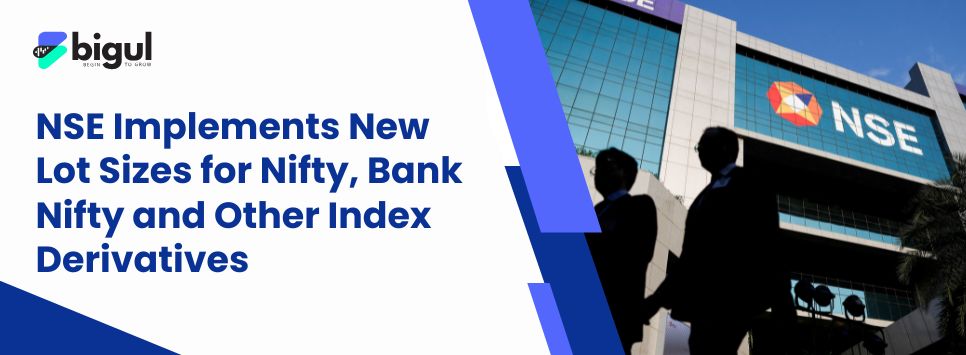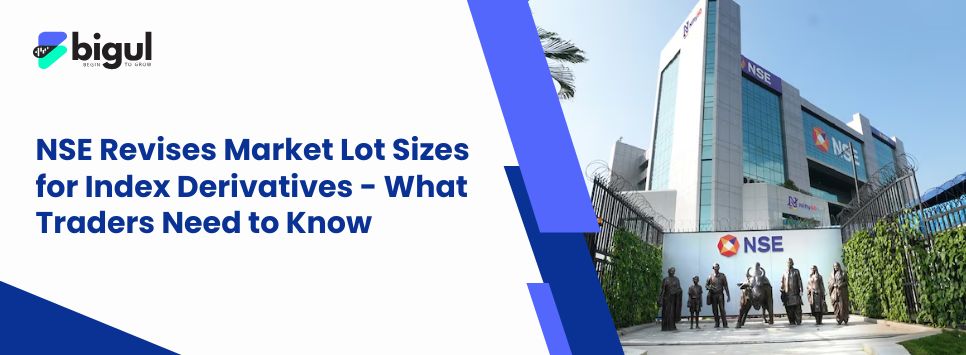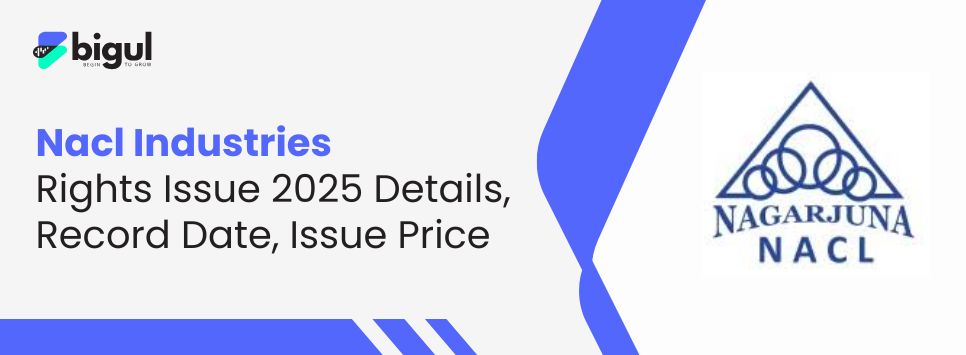In the ever-changing reality of the financial markets, investors and traders are always looking for advanced instruments to chart opportunities and monitor risks. Among them, option contracts are truly versatile derivatives that provide distinct opportunities for speculation, income, and protection of a portfolio.
This Guide is aimed at de-mystifying the thrilling but otherwise thought to be complicated world of options trading. This will enable comprehension of the definition of option trading, a range of strategies for different market perspectives such as Bullish Strategies, Bearish Strategies, Neutral/Volatility Strategies, and Income-Generating Strategies, along with the Advantages of Options Trading and Disadvantages of Options Trading, and the most important methods of Risk Optimization in Options Trading. In addition, a dedicated Frequently Asked Questions (FAQs) on Options Trading section has been added for answering popular questions and offering prompt replies.
Also Read | Best Strategies for Option Selling in the Indian Stock Market
What is Option Trading?
Option trading is a process of selling and purchasing agreements called options in financial markets. An option is a derivative product that gives the owner (the buyer) an advantage (but not the responsibility) to purchase or sell a base asset (executables) for a specific price (the strike price) by or on a specific date (the expiration date).The buyer pays a front-end premium for this right, and the seller will assume the corresponding obligation. Additionally, option trading is being used to do many things: speculate on price movement, to hedge current positions, and generate income.
Also Read | 5 Option Strategies Every Investor Should Know
Options Trading Strategies To Know
Bullish Strategies (Expect Price to Increase)
Bullish strategies are strategies that an investor could sell and decide to exercise if it expects the price of the underlying to increase. These strategies commonly look to make a return from the increase in the prices of the underlying assets.
-
Long Call: Long call is a strategy of calls that is employed by a trader anticipating an increase in the price of an asset. You have to make up your mind before the option expires. The position is profitable if the market value of the asset is above the strike price plus the option's cost.
-
Bull Call Spread (Debit Call Spread): It is an options trading strategy involving purchases of two calls with different strikes using the same expiration. This is a strategy utilized by traders in the case they are anticipating a moderate increase in the value of the underlying asset, not a significant increase. The short call will always have a greater strike than the long call, i.e., the strategy will incur an initial payment (outlay/debit).
-
Bull Put Spread (Credit Put Spread): This is a strategy in options trading in which two put are used by traders. It is generally employed when the trader is anticipating the underlying asset to be bullish or stable and the aim is to make profit through the net premium received, whereas risk remains limited. It is often used in anticipation that the underlying asset's price will continue to show mostly bullish or some stable characteristics.
Bearish Strategies (Expecting Price to Fall)
These strategies are employed when an investor anticipates a decline in the price of the underlying asset. They expect the price of the underlying asset to decline in order to profit from the underlying asset.
-
Long Put: A long put is a purchase of a put option which enables the trader to sell the underlying asset at a previously determined price prior to the expiry of the option. The strategy is profitable when the market price of the asset falls below the strike price after considering the premium incurred. It's one of the most commonly used bearish strategies, particularly when a drastic fall in the value of the asset is anticipated. The profit potential rises when the market keeps declining, and the risk is only the cost spent on the option. The breakeven is achieved when the price of the asset declines enough to pay for the premium cost. Long puts are utilized by speculators or as a hedge against potential downside in a portfolio.
-
Bear Put Spread (Debit Put Spread): The bear put spread is classified as a bearish options strategy, one employed if the investor expects a modest price drop in the underlying asset. The investor buys one put option having the higher strike price while simultaneously writing another put option having a lower strike price; both print with the same expiration date.
This helps to keep the initial cost down compared to just buying one put, and it also limits potential loss and potential gain. The trade is advantageous as long as the asset price continues to decline but gains are limited once the asset price falls below the lower strike. It is, by nature, a more conservative approach compared to a strictly long put position.
-
Bear Call Spread (Credit Call Spread): It is an options strategy when a trader anticipates a moderate drop or decline in the initial asset's price.
It is composed of selling a call option at a weaker strike price and buying a call option at an advanced strike price, having the same expiration date. The net premium received on the initiation of the trade is the maximum profit eventuality.
Neutral/Volatility Strategies (Anticipating Stable or Large Movement)
These strategies are used where you anticipate prices staying in a range (neutral expectation) or expect a big price movement but do not know its direction (volatility expectation).
Covered Call: This is a cash-generating strategy whereby a shareholder holds 100 shares of a stock and at the same time sells an option to buy against those shares. The shares you own 'cover' your obligation to sell if the option is exercised.
Long Straddle: It is a long call and a long put on the same underlying asset at the same strike price and expiration date. This combination acts as a bet that the price of the stock will move really far up or really far down. The straddle, in general, is bought since a large price movement and/or significant volatility is expected in the near term.
-
Long Strangle: A strangle is an options trading method that's kind of like a straddle, but with a twist. Instead of using call and put options that are right at the market price, a strangle goes for options that are out-of-the-money, which means they're priced away from the current market level. They share the same underlying stock expiration date but with different strike prices.. In general, strangles are cheaper than straddles, but you’ll need a bigger price swing in the asset to make a profit.
-
Iron Condor: It is a strategy that does not depend on market direction. The trader is expecting to profit when the market price stays in a specific range until the expiry of the options. The short vertical put spread and the short vertical call spread opportunities are brought together in one position. The short vertical put and call spreads will have the same expiration date
Income-Generating Strategies
These strategies are tailored to produce regular income for investors by way of systematic premium collection. They are usually preferred by those holding a neutral to moderately bullish or bearish view of the underlying asset, seeking to benefit from time decay.
-
Covered Call: This is the traditional income method where you have a long position of 100 shares in the underlying and at the same time sell a call against those shares. If it is decided to exercise the call option, the shares will be owned to fulfill the obligation to sell.
-
Cash-Secured Put: This is a strategy in which you sell a put option while maintaining sufficient cash balance in your account to buy the underlying asset if the option is exercised (assigned). It's really a commitment to buy a stock at a lower price, and you receive a premium for entering into that commitment.
What Are The Advantages of Options Trading?
Options trading offers strong attractions for many market participants:
-
Leverage: Traders can control a large position with modest capital, amplifying returns from small price movements.
-
Defined Risk for Buyers: The most a trader can lose is the premium paid, making the risk easy to understand and control.
-
Flexibility and Diversity: Options can be used together for obligation seeking any type of market view – bullish, bearish, neutral, or volatile.
-
Income Generation: Strategies like Covered Calls and Cash-Secured Puts help investors earn steady premium income.
-
Hedging Capability: Useful as insurance—e.g., Protective Puts cap losses during market declines.
-
Lower Capital Requirement: More affordable to control 100 shares via options than by owning them directly.
-
Time Advantage for Sellers: Time decay (Theta) hurts buyers but benefits sellers if the asset stays in range.
What Are The Disadvantages of Options Trading?
Despite benefits, options trading has risks:
-
Steep Learning Curve and Complexity: Options involve multiple factors (strike, expiry, Greeks) and need strong understanding.
-
Time Decay (Theta): Options lose value over time; even if the asset moves as expected, slow movement can cause total loss.
-
High Risk for Sellers (Uncovered): Sellers of naked options face potentially unlimited losses if the market moves sharply.
-
Liquidity Issues: Some options have wide bid-ask spreads or low volume, making entry/exit difficult.
-
Leverage Amplifying Losses: Leverage increases both gains and losses—small moves can cause large losses.
-
Assignment Risk: Sellers may be forced to buy/sell stock, leading to capital strain or loss of holdings.
-
Impact of Implied Volatility (Vega): Price drops due to falling volatility can cause losses even if price moves in your favor.
-
Regulatory Requirements: Traders must meet rules (e.g., SEBI in India), including signing risk acknowledgement contracts.
How to Optimise Risk in Option Trading?
Good risk management isn't merely a recommendation when trading options; it's the foundation of long-term prosperity. By managing your risk parameters in a proactive manner and using disciplined techniques, you'll be able to trade the market with more confidence and safeguard your capital.
Define Your Risk Capacity & Deployment of Capital
Before opening any trade, you ought to have a clear concept of your own capital limits.
-
Precisely how much capital can be safely afforded to be lost without causing financial distress should be determined. Your personal limit dictates the type of strategies and size of your positions.
-
Set a maximum loss per trade. Never bet more than a small, predetermined percentage (e.g., 1-5%) of your total trading capital per trade. This self-discipline prevents individual losses from threatening your overall portfolio.
-
Position Sizing: With your risk per trade and the highest loss for the strategy per contract, come up with the right number of contracts to trade. Figure it out so you're within your tolerance for risk.
Adhere to Clear Trade Management Rules
Discipline in follow-through is considered just as important as preparation.
-
Define Clear Entry and Exit Rules: Come up with your entry points, manageable profit stops, and most importantly, your stop-loss definitions (the established price at which you exit the trade to control losses). You must adhere to these stop-losses religiously; they are your greatest approach to prevent small losses from snowballing into terrible losses.
-
Use Appropriate Expiration Dates: Use expiration dates that allow enough time for your expected market move to occur, considering the impact of time decay (Theta) very carefully. The buyer of options has Theta working against them; the seller has Theta working for them.
-
Monitor Option Greeks: Option prices can be seen changing as time passes (Theta) or as market expectations change (Vega), by observing the Option Greeks. Knowing these Greeks will allow you to make informed decisions and adapt your strategy for changing market conditions.
Diversify & Leverage Defined-Risk Strategies
Diversify and add safety nets wherever possible.
-
Employ Defined-Risk Strategies (Spreads): Employ such strategies as debit spreads (e.g., Bull Call Spreads, Bear Put Spreads) or credit spreads (e.g., Bear Call Spreads, Bull Put Spreads). These strategies restrict your maximum potential loss immediately and have a built-in safety net.
-
Diversification: Let all Capital may not be concentrated in one location or one method.
Spread your capital in several strategies, underlying assets, and perhaps other market sectors. This lowers overall portfolio risk by reducing the effect of negative performance in one sector. -
Continuous Monitoring: Always maintain your current positions as well as the overall state of the market. The markets are not static and changes to existing strategies are often time-sensitive.
Encourage Continuous Learning & Discipline
The best risk management tools you will ever have are your learning and discipline.
-
Trade with a Written Trading Plan: Prepare a detailed plan that sets your trading goals, chosen methods, some risk rules, and stop-loss rules for various market scenarios. One must have the ability to have this plan followed.
-
Start Small and Grow: Especially if you are a new options trader, start with small position sizes and simple, defined-risk strategies. The more experience and confidence you build, the larger the position size and more complex strategies you can implement.
-
Ongoing Education and Training: Like the equity market, the options marketplace is always changing. Make a point to continue investing in your education about new strategies, behaviors in the market, and education about options pricing and more advanced risk management techniques. Information will be your best weapon when dealing with the options world.
By consistently following the new comprehensive risk management principles you have seen, you will greatly improve your chances of attaining profitability long-term.
Conclusion
Options trading, though certainly sophisticated, provides a compelling and generalizable collection of tools for traders and investors who wish to profit from various market movements, collect income, or successfully hedge against current holdings. As the foregoing elementary primer has shown, by employing strategies based on differing market opinions—bullish, bearish, neutral/volatility, or income-producing—you are able to match your trades with your own risk tolerance, capital ability, and long-term financial objectives.
The strategic leveraging, and the intelligent drawing of defined-risk spreads along with income generating techniques such as Covered Calls and Cash-Secured Puts, can create repetitive opportunities if applied with steadfast discipline. However, it is imperative that you understand and work through the inherent challenges; the importance of understanding time decay (Theta), implied volatility (Vega), position sizing, and a proper risk allocation framework cannot be stressed enough.
By blending a systematic approach with ongoing learning, abiding by strictly defined rules, and staying alert to market-specific idiosyncrasies (particularly relevant in fast-evolving Indian markets), traders can go a long way to help ensure long-term success in the options market. Successful options trading is not ultimately about avoiding risk, but about handling it smartly while availing oneself of the special opportunities these tools offer. Master the fundamentals, begin with well-defined strategies, control your risks—and allow experience and continuing education sharpen your advantage toward profitable long-term results.
Frequently Asked Questions (FAQs) - Options Trading
Q1: What are the Levels of Options Trading?
A multi-level approval system based on risk is used by brokers. SEBI requires signing an options agreement. Approval depends on experience and financial status.
-
Level 1: Basic—Covered Calls, Protective Puts (limited risk).
-
Level 2: Intermediate—Buy Calls/Puts, simple spreads.
-
Level 3: Advanced—Straddles, Strangles, Iron Condors, selling naked puts.
-
Level 4: Most Advanced—Selling naked calls, complex strategies, needs capital and experience.
Q2: How do Corporate Actions Impact Options?
Corporate actions affect contract terms, so traders must monitor closely.
-
Splits/Reverse Splits: Adjust strike and shares proportionally.
-
Cash Dividends: Don’t change strike but lower stock price on ex-date.
-
Merger or Acquisition: Options may either be changed into shares of the company that is buying, or settled by paying cash.
-
Spin-offs: Options may be repriced to reflect both companies.
-
Bonus/Rights Issues: Cause changes in strike or contract size.
Q3: Are Options Strategies Different for Indian Markets?
Basic concepts are same, but Indian specifics matter:
-
Assets: Mainly Nifty, Bank Nifty, FinNifty, and select stocks.
-
Expirations: Indices have weekly; stocks monthly.
-
Lot Size: Fixed (e.g., 50 for Nifty); P&L is per lot.
-
Settlement: Indices cash-settled; stock options physical if ITM.
-
Taxation: Special rules apply; traders must be aware.
-
Regulations: SEBI governs all trading activity.
Q4: What Role Do Options Greeks Play?
How different factors are responded to by options are shown by the Greeks.
-
Delta (Δ): Is used to show how an option’s price is affected by changes in the stock price, and the chance it will end in the money.
-
Gamma (Γ): Gamma measures the change in Delta and further describes how Delta can impact the option price which in turn is influenced by additional changes in Delta.
-
Theta (Θ): Time decay rate; hurts long, benefits short positions.
-
Vega (ν): Impact of volatility changes.
-
Rho (ρ): Interest rate change effect (more on long-dated options).
Understanding Greeks improves risk management and strategy adjustments.
Also Read:
- What is the Butterfly Spread Option?
- What is Long Strangle and How to Use it?
- What is the Short Strangle Option Strategy?
- What is an ITM Call Option? Know Everything Here!




.jpg)





.jpg)
